The words “full moon” in many languages

It is said that there are more than 6,000 languages worldwide (this is hard to imagine) and it is a fascinating concept to think, there are probably as many words for “full moon”.
Here we begin our little journey to the full moon. A few words about the fascinating quest of the greater purpose, that includes the full moon circulating through our lives. In layman’s terms and not always scientific (astronomy experts – don’t look too closely!). We would like to wish you illuminating moments. Enjoy!


It is said that there are more than 6,000 languages worldwide (this is hard to imagine) and it is a fascinating concept to think, there are probably as many words for “full moon”.
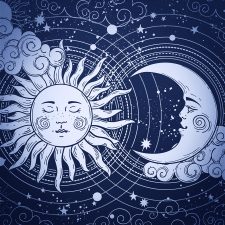
A full moon is when the Sun and the Moon are facing opposite, being in opposite direction from an Earth perspective.
This might feel astonishing if one imagines that the Moon is on one side, the Sun on the other and the Earth in between? Shouldn’t the Earth throw a shadow onto the Moon? Bingo – this is exactly what she does! But only when the Moon is exactly on the Earth orbit, the so called “ecliptic”. When this takes place, we speak of a lunar eclipse!

The Moon needs 27.33 days to circle around the Earth. Something that is also referred to as “sidereal time”. But because the Earth orbits the Sun, just like the Moon orbits the Earth, the Moon has to travel two further days in order to resume the same position to the Earth and Sun. This is then called the “sidereal time”. In order to determine the point of time of the reoccurring full moon, the sidereal time serves as basis.

We already know now that the moon month is mostly shorter than the calendar month, being on average approximately 29.5 days. If full moon falls on the first or second of a month, it is possible that another full moon occurs in the same month, for instance in July 2004:
Friday, 2 July 2004, 01:08:54 pm
Saturday, 31 July 2004, 08:05:06 pm
This event is also known as “blue moon”.

The answer is: “everywhere at the same time”. This refers to the so called Universal Time (UT) though, which is used for general astronomical events. We have already learnt that full moon is an astronomical event, where the moon, sun and the earth play a role by being in a specific position. So, full moon takes place at a specific time in the outer space. This point of time is specified by astronomers namely by the Universal Time.

There are multiple ways of approaching this question. If we look at it from a purely theoretical standpoint, we might be tempted to say that the full moon is infinitely short, since the phases of the moon are changing continuously. The moon is not yet quite full shortly before the full moon, and is already waning shortly afterwards.
However, there is a practical aspect that lets us quantify the full moon as a finite and measurable span of time: Since the Sun is significantly bigger than the Moon, its rays are able to reach just a little over half of the Moon’s surface. This means that the timespan in which the visible side of the Moon’s surface is irradiated (as seen from Earth) is longer than infinitely short.

Whether scientists, astrologers or esoterics, they agree on one thing: the moon influences earth and life on earth. For instance, it regulates the tides through its magnetism. Also continents feel the consequence of this magnetism and either raise or lower their position sometimes up to 26 cm.

In nature it is a known fact: for some animal species, mating takes place at full moon. However, the examples that can be found on this subject are rather simple. Full moon serves in some cases indirectly as the cause (for instance through the high water levels during the tides that the horseshoe crab uses to deposit its eggs) or also as the signal for both sexes of a species to begin at the exact same time to safeguard their future existence (a particular type of fly or also corals). It is understood that also wolves are led by full moon when it is time to mate.

… that people are looking for an argument at full moon or are especially happy …
… that if full moon is surrounded by a haze, a person dies …
… that you raise your hat three times to the moon (being a man) or you make a curtsey (being a woman), in order to protect yourself from misfortune until the next full moon …
… that whoever does not chink glasses with full moon at least once, does not deserve any happiness [Greek toast] …
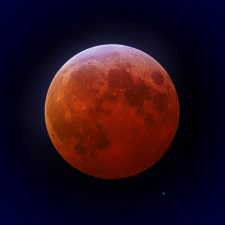
During a lunar eclipse, the Moon moves through the shadow of the Earth. Which means, that the Earth is positioned quite exactly between the Sun and Moon and casts its shadow onto the Moon. This is only possible at full moon and if some other requirements are met. Depending on whether the moon passes the partial or the core shadow of the Earth, we speak of a partial or total lunar eclipse.
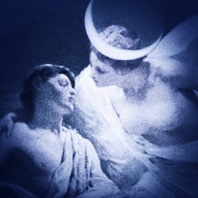
Selene is the Greek moon goddess, she is a daughter of Hyperion and Theia from the Titans, a race of deities. The two siblings of Selene are Eos (the goddess of dawn) and Helios (the god of the sun). These three, forge the bridge between day and night, the Sun and the Moon, masculine and feminine. Later, in Greek mythology, Selene has also been equated with Artemis, just like Apollo is linked with the sun god Helios.

Just like with all natives from different countries and continents, the Moon also plays an important role amongst African peoples in myths and stories. In this respect, we have already mentioned other peoples, for example the Native American Indians in America, the Inuit in the far north or the Aborigines in Australia.
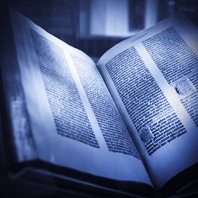
The Bible is undoubtedly one of the most important books in human history – most printed, most translated and worldwide the most widespread. It is the Holy Scripture of Christianity and Judaism (in different forms) and therefore the manifestation of God’s word in two of the major world religions.
The text contains, with its archaic, poetic language, many descriptions of nature and celestial events. So, it is obvious that the Sun, the Moon and the stars are mentioned. But is the full moon also to be found?

We figured it would be obvious to look for the full moon in the works of England’s most famous poet William Shakespeare (1564–1616). Surprisingly, the »moon« is to be found more often, however the word »full moon« appears in the original text only once, namely in »King Lear«.
The text of the comedy »A Midsummer Night’s Dream« (approx. 1595), contains the moon a whopping 52 times (28 times in the last act alone) and it can be assumed that Shakespeare was thinking of the full moon when he wrote these lines. Although it is not described as the »full moon«.

Although, one could easily presume that full moon influences the reproduction of many creatures, this has really only been proven for some species. One assumes this is the case with wolves, specific insects or crabs and also many humans vow not being able to do anything other than to look for the closeness of the other (or the same) sex at full moon. But absolutely certain are scientist only about one animal species that may not even be considered an animal by many: the corals. Here it has been established that reproduction is dependent on water temperature and moon light.

Bathing during the full moon or in the full moon light, is a fascinating experience, which one or the other has surely made. Two ways to interpret this is either bathing in the water at the full moon (outdoors or in the bath tub), or bathing directly in the moonlight (when the light of the Moon shines onto your skin, just like sunbathing).

This classic of the surrealistic movie scene (the original in French »Un Chien Andalou«) by Luis Buñuel and Salvador Dalí, evoked mixed reactions when released in Paris, in 1929. Even from a current perspective, the movie polarizes, whereby its artistic value remains indisputable.
The approximately sixteen minute act consists of a series of individual sequences, which show different encounters of men and women. There are dream-like, symbolic, and partly absurd scenes that do not create a plot in the classic sense. Yet, the movie projects some sort of development, however, it remains incomprehensible.
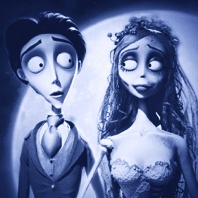
Fitting in with today’s full moon and the forthcoming events of Halloween, we dedicate this article to the stop motion movie »Corpse Bride« (2005) by Tim Burton, the master of bizarre and subtle productions. The movie is based on a Russian legend »Corpse Bride« and captures the story of a wedding between two people of varying social backgrounds (Victor & Victoria) or rather differing worlds (Victor & Emily), with the resulting tension.

The word »mooncalf« is connected to a sad story, because in earlier centuries it was used for calves that were born malformed. It was assumed that the Moon was responsible for this, which was generally seen as a symbol of the feminine and dark side of life. Not exactly fair toward the Moon and unfortunately characteristic for the attitude wanting to assign the good to the masculine and the evil to the feminine.
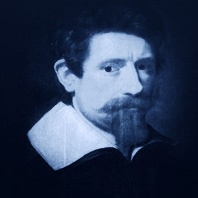
More than 400 years ago, the German artist Adam Elsheimer (1578–1610) painted the picture »Flight into Egypt« (1609), where he depicted the well-known biblical scene of the escape of Joseph and Maria with the Christ Child. The special feature of this painting is, that it shows the full moon and night sky with such a richness of detail on a scale not seen before. Scientists – like for example Dr. Christian Sicka of the ›Deutsche Museum‹ Munich – have examined this work and come to the conclusion that this is possibly the first correct astronomical true to life depiction of the night sky in paintings. One can easily recognise the lunar maria on the Moon’s surface and also the Milky Way, moreover a clear graduation of brightness with the individual stars.